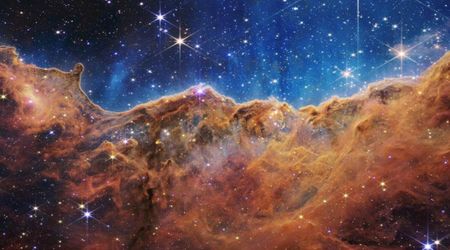Helix planetary nebula

The Helix Nebula is one of the closest of all planetary nebulae, lying at a distance of about 400 light years from Earth.
To find the nebula, start from Fomalhaut (Alpha Piscis Austrinus) and move your telescope 11 degrees northwest to 5th-magnitude 47 Aquarii. From this star slide two degrees east to Upsilon Aquarii, and you’re almost there. The Helix Nebula is just one degree west of this star.
The planetary appears bright at magnitude 7.3, and a huge 12.8 arcminutes across. This is about half the size of the Full Moon! However, despite its large size the nebula is faint and has a low surface brightness, making it hard to pick out from the sky background.
Small scopes show NGC 7293 as a circular misty patch, and a 150-mm telescope reveals that the center is dark and contains a 13th-magnitude star.
If observed from a dark location the Helix is visible even with binoculars, that show the object as a large circular hazy spot. Rich-field instruments with wide-angle eyepieces are ideal for picking up objects like this on the night sky.









